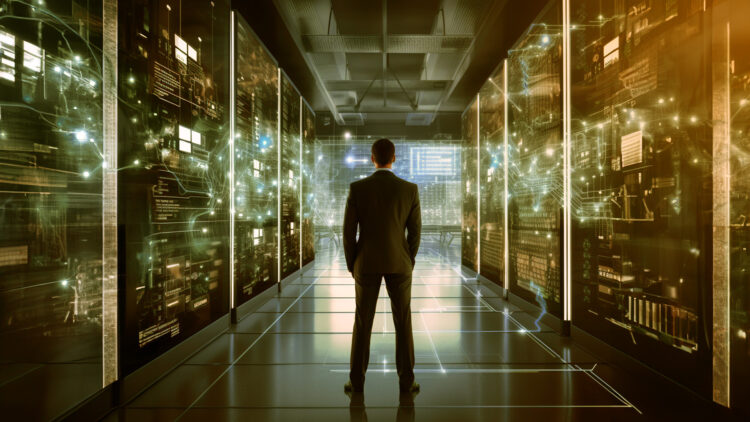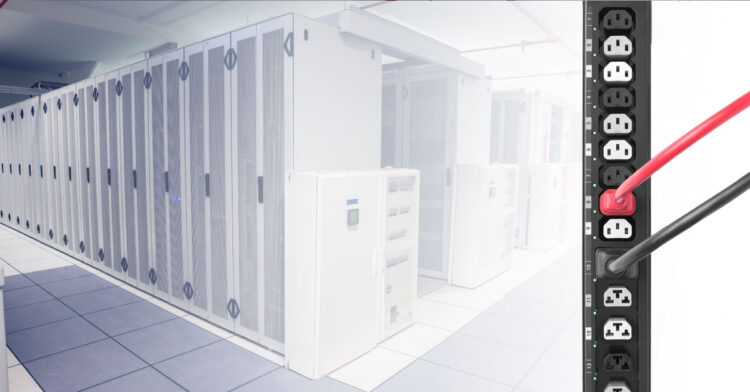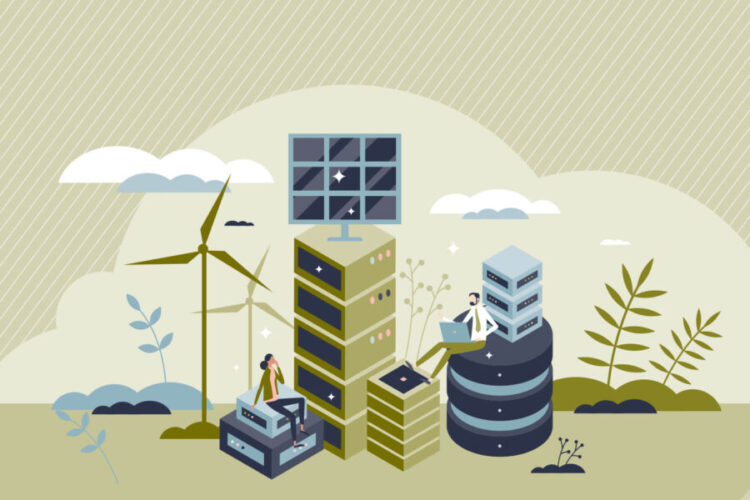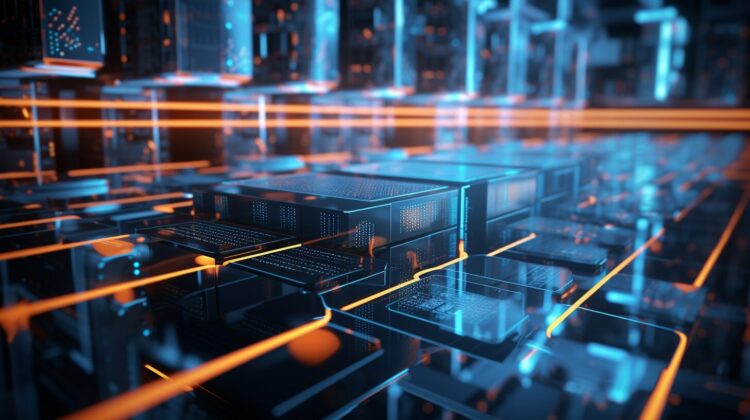In today’s fast-paced, digital world, data centers are at the heart of our global information infrastructure. As the demand for cloud services, big data, artificial intelligence (AI), and internet-of-things (IoT) applications continues to grow, the need for efficient, reliable, and sustainable power distribution systems in data centers has become more pressing than ever.
Energy-intensive by nature, data centers consume vast amounts of electricity, leading to significant operational costs and environmental impacts. However, by adopting sustainable power distribution solutions, data centers can not only reduce their energy consumption but also improve efficiency and reliability while minimizing their environmental footprint.
This article explores key strategies and technologies for creating sustainable power distribution systems in data centers, highlighting their importance in supporting both business objectives and environmental goals.
Table of Contents
The Energy Challenge in Data Centers

Data centers are notorious for their high energy consumption. According to the International Energy Agency (IEA), data centers account for approximately 1% of global electricity demand, and this figure is expected to rise as digital services expand. The increasing reliance on cloud computing, streaming services, and AI-driven applications has led to the exponential growth of data centers, making energy efficiency a critical concern for operators.
In a typical data center, a significant portion of energy is consumed by servers, storage devices, networking equipment, and cooling systems. Additionally, power distribution losses, inefficient equipment, and outdated infrastructure can further exacerbate the energy challenge. As organizations strive to reduce their carbon footprint and operating costs, implementing sustainable power distribution solutions is essential for achieving both goals.
Key Elements of Sustainable Power Distribution in Data Centers
To address the growing energy demands of data centers while minimizing environmental impacts, it is crucial to focus on optimizing power distribution systems. Here are some key strategies and technologies that contribute to a more sustainable and energy-efficient data center infrastructure:
1. Energy-Efficient Uninterruptible Power Supply (UPS) Systems
One of the critical components in a data center’s power distribution system is the uninterruptible power supply (UPS). The UPS ensures a continuous power supply to critical systems in the event of a power failure. However, traditional UPS systems can be inefficient, consuming significant amounts of energy even when no backup power is needed.
Modern energy-efficient UPS systems, such as modular and transformerless designs, offer significant improvements in efficiency by reducing energy losses during normal operation. Additionally, advanced UPS systems with dynamic voltage management and real-time monitoring capabilities allow data centers to optimize power usage, ensuring that only the necessary energy is consumed at any given time.
By upgrading to energy-efficient UPS systems, data centers can reduce both their energy consumption and operating costs while maintaining the reliability needed to support mission-critical operations.
2. Intelligent Power Distribution Units (PDUs)

Power distribution units (PDUs) play a central role in distributing electricity from the main power source to individual servers and networking equipment in a data center. Traditional PDUs provide limited functionality, often supplying power without offering any insights into energy usage or real-time monitoring.
Intelligent PDUs, also known as smart PDUs, are designed to provide advanced monitoring and control capabilities. These PDUs can track energy consumption, power quality, and load distribution in real-time, giving data center operators detailed insights into how energy is being used across the facility. Smart PDUs can also help identify areas where power is being wasted or where equipment is operating inefficiently.
By integrating intelligent PDUs into their power distribution systems, data centers can improve energy management, optimize load balancing, and identify opportunities for energy savings. This results in more efficient power usage and a reduction in overall energy consumption.
3. Power Usage Effectiveness (PUE) Optimization
Power Usage Effectiveness (PUE) is a key metric used to evaluate the energy efficiency of a data center. PUE is calculated by dividing the total amount of energy consumed by the facility by the energy used solely by the IT equipment. A lower PUE value indicates a more efficient data center.
Optimizing PUE involves addressing inefficiencies in both power distribution and cooling systems. To achieve a lower PUE, data centers can implement energy-efficient power systems, optimize airflow management, and reduce energy losses in the electrical infrastructure. For instance, using high-efficiency transformers, eliminating unnecessary voltage conversions, and adopting direct current (DC) power distribution can help reduce power losses.
By continually monitoring and optimizing PUE, data centers can improve their energy efficiency and reduce their environmental impact, while also lowering operational costs.
4. Integration of Renewable Energy Sources

A critical component of sustainable power distribution in data centers is the integration of renewable energy sources such as solar, wind, or hydropower. By incorporating on-site renewable energy generation or purchasing renewable energy credits, data centers can reduce their reliance on traditional, fossil fuel-based energy sources.
Many leading data center operators, such as Google, Microsoft, and Amazon, have already committed to powering their facilities with 100% renewable energy. This shift not only supports corporate sustainability goals but also provides long-term cost savings as renewable energy becomes more competitive with traditional energy sources.
In addition to renewable energy generation, data centers can implement energy storage systems to store excess renewable energy for use during periods of high demand or when renewable generation is not available. Energy storage systems, such as lithium-ion batteries or thermal energy storage, can provide reliable backup power while reducing the need for grid-supplied electricity.
5. Energy-Efficient Cooling Systems
Cooling is one of the most energy-intensive operations in a data center. Traditional air-conditioning systems consume large amounts of electricity, contributing to high operational costs and reduced energy efficiency.
To enhance sustainability, data centers are increasingly adopting advanced cooling technologies such as liquid cooling, free cooling, and air-side economization. These methods significantly reduce the amount of energy needed to maintain optimal operating temperatures.
Liquid cooling involves circulating a coolant directly through server components, removing heat more efficiently than traditional air-cooling systems. Free cooling takes advantage of outside air to cool the facility, minimizing the need for mechanical cooling. Air-side economizers draw cool outside air into the data center when ambient temperatures are low, reducing the reliance on air-conditioning units.
By investing in energy-efficient cooling technologies, data centers can drastically lower their energy consumption, reduce cooling-related operational costs, and improve overall sustainability.
Ensuring Reliability and Safety
While sustainability is a key focus, reliability and safety remain paramount in data center operations. Power distribution systems must be designed to prevent outages, protect sensitive equipment, and ensure the continuous availability of critical services.
1. Redundancy and Fault Tolerance

Redundancy is a fundamental principle in data center design, ensuring that there are backup systems in place to maintain operations in the event of equipment failure. A sustainable power distribution system should incorporate redundant power supplies, backup generators, and fault-tolerant components to ensure uninterrupted operation.
Modern power distribution systems also integrate real-time monitoring and predictive maintenance technologies, which can detect potential issues before they lead to failures. These systems provide data center operators with critical insights into the health of their electrical infrastructure, enabling proactive maintenance and minimizing the risk of downtime.
2. Circuit Protection and Safety
Ensuring the safety of a data center’s power distribution system is essential to preventing electrical fires, equipment damage, and potential hazards to personnel. One critical component of circuit protection is the use of molded case circuit breakers (MCCBs). These breakers provide enhanced protection by automatically disconnecting circuits in the event of an overload, short circuit, or fault condition.
MCCBs are designed to handle high current loads commonly found in data centers, ensuring that electrical faults are quickly isolated to prevent damage to equipment and minimize downtime. Incorporating MCCBs into a data center’s power distribution system enhances both safety and reliability.
The Future of Sustainable Power Distribution in Data Centers
As the digital economy continues to grow, data centers will play an increasingly important role in supporting global information infrastructure. To meet the demands of this growth while minimizing environmental impact, data centers must adopt sustainable power distribution solutions that prioritize energy efficiency, reliability, and the integration of renewable energy.
Looking ahead, advancements in technologies such as artificial intelligence (AI), machine learning, and automation will play a key role in optimizing power distribution and energy management in data centers. AI-powered systems can analyze vast amounts of data to identify inefficiencies, predict equipment failures, and optimize load balancing, all of which contribute to more sustainable operations.
Data centers that embrace sustainable power distribution solutions not only contribute to global efforts to reduce carbon emissions but also benefit from improved operational efficiency, lower energy costs, and enhanced reliability. By investing in advanced power distribution technologies and integrating renewable energy, data centers can achieve a more sustainable, resilient future.
Conclusion
Sustainable power distribution solutions are critical for the future of data centers. By adopting energy-efficient technologies, optimizing cooling systems, integrating renewable energy, and ensuring reliable circuit protection, data centers can significantly reduce their environmental impact while maintaining the high performance required for modern digital infrastructure.
Through careful planning and the adoption of innovative technologies, data centers can strike the right balance between sustainability, energy efficiency, and operational reliability, supporting both business goals and global environmental objectives.
